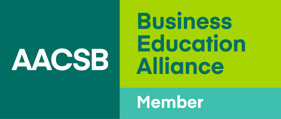As the digital world keeps evolving, business schools need smart social media strategies that go beyond basic marketing. Our guide breaks down how to gather and use digital insights effectively, giving your institution a clear framework to stay ahead.
In this article:
- Why Competitive Intelligence Matters
- Key Components of Effective Social Media Competitive Intelligence
- Content Strategy Analysis
- Platform-Specific Insights
- Technological Tools for Competitive Intelligence
- Why You Should Watch Platforms You're Not Actively Using
- Strategic Priorities for 2025
- Transforming Insights into Strategy
- Key Takeaways
Why Competitive Intelligence Matters
Social media has transformed from a simple communication channel to a rich source of strategic intelligence. For business schools, these platforms offer unprecedented opportunities to understand market positioning, track industry trends, and develop more targeted communication strategies.
Key Components of Effective Social Media Competitive Intelligence
Content Strategy Analysis
Competitive intelligence today is all about looking deeper into content analysis. Business schools need to go beyond basic metrics to truly understand:
- Types of content being produced
- Storytelling approaches
- Thought leadership indicators
- Engagement patterns
Leading institutions are shifting from purely promotional content to more authentic, value-driven storytelling. That means sharing real experiences, highlighting research breakthroughs, and showcasing institutional values through strategic communication.
Platform-Specific Insights
Different social media platforms offer unique strategic opportunities, for example:
-
LinkedIn: The Professional Network
LinkedIn has become a key platform for business schools, offering much more than just a recruitment tool. It serves as a powerful professional intelligence hub. Schools can:
- Showcase faculty research
- Highlight student achievements
- Build professional networks
- Demonstrate thought leadership
-
X (Twitter): Real-Time Strategic Communication
X has seen shifts in engagement, with some users exploring other platforms. However, it remains a valuable space for showcasing institutional responsiveness and intellectual engagement. The platform thrives on concise, impactful communication that:
- Shares breaking research
- Participates in global conversations
- Demonstrates institutional agility
- Connects with diverse stakeholder groups
Technological Tools for Competitive Intelligence
Staying ahead of the competition requires the right tools to gather, analyse, and interpret competitive intelligence effectively. Business schools can leverage a range of platforms to track social media performance, monitor industry trends, and assess competitor strategies.
Some of the most effective tools include:
- Brandwatch
- Hootsuite Insights
- Sprout Social
- Social listening technologies
Why You Should Watch Platforms You're Not Actively Using
Even if your business school isn't currently posting on platforms like TikTok, Bluesky, Threads or Instagram Reels, keeping an eye on them is crucial. These channels are where potential students are spending time, engaging with content, and shaping perceptions of higher education brands — even if you're not there yet.
By observing competitor activity on these emerging or niche platforms, you can:
- Identify trends early – Spot what kinds of content are gaining traction with your target audiences before they become mainstream.
- Understand what drives engagement – Short-form video, user-generated content, and influencer collaborations may be driving results elsewhere.
- Monitor competitor innovation – See how other institutions are experimenting with tone, storytelling, or new features, and assess their success.
- Gauge shifting platform popularity – Platforms rise and fall. What may seem peripheral now could become central to student engagement strategies in the near future.
You don’t have to be on every platform to benefit from the insights they offer. Passive observation of these channels can guide your strategic decisions, spark content ideas, and help future-proof your institution’s social media presence.
Strategic Priorities for 2025
What to Focus On
Business schools should prioritise authentic storytelling, engaging audiences with interactive content, and showcasing research and innovation in a compelling way. Highlighting sustainability initiatives will be key to demonstrating long-term impact, while showcasing technological advancements will reinforce their role in shaping the future of education.
What to Avoid
Business schools should steer clear of overly promotional content and a passive social media presence that lacks interaction. Lengthy, text-heavy posts can deter engagement, while neglecting audience interaction can weaken connections and impact visibility.
Transforming Insights into Strategy
The best competitive intelligence isn't just about gathering data; it's about staying curious, interpreting strategically, and constantly learning and adapting. Business schools that view social media as a strategic intelligence tool, not just a marketing channel, will gain a strong competitive edge.
Key Takeaways
Adopt a holistic approach to digital intelligence, focusing on authentic, value-driven content. Leverage the unique strengths of each platform, while maintaining ethical research practices. Staying adaptable is crucial in navigating the ever-evolving digital landscape.
Download our Social Media Competitor Analysis Report below ↓
With an eye for style and always keeping impact in mind, Megan is dedicated to delivering consistently interesting content that influences audiences, demonstrating growth in both engagement and follower numbers across different key platforms and networks. Beyond creating gripping content, Megan regularly produces key insights into how business schools and universities could, and should, be using social media as a marketing tool.


.png?width=160&height=200&name=team%20photos%20(13).png)


